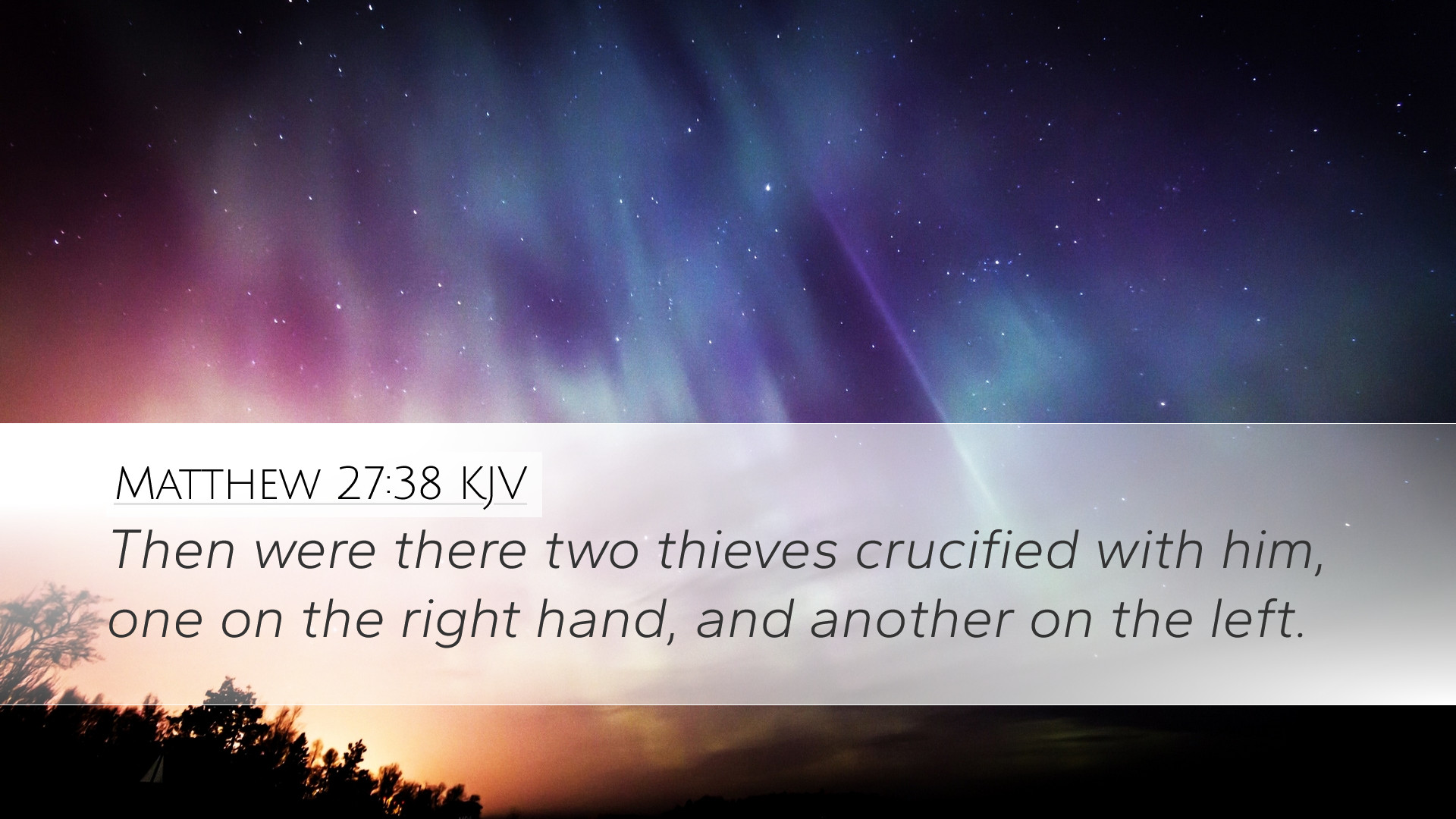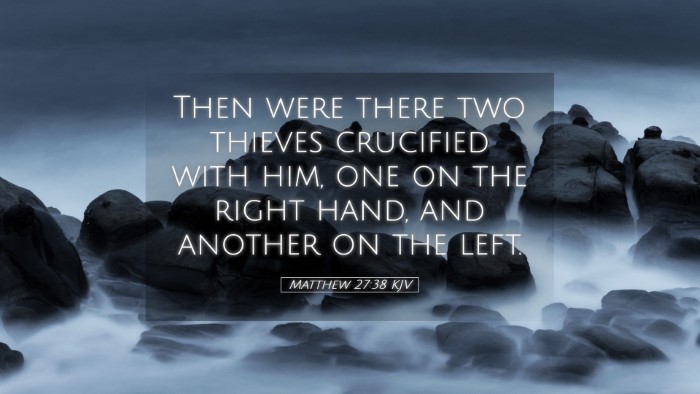Commentary on Matthew 27:38
Bible Verse: “Then were there two thieves crucified with him, one on the right hand, and another on the left.”
Introduction
The pivotal moment of the crucifixion in the Gospel of Matthew reveals profound theological implications, especially when considering the context of the two thieves who were crucified alongside Jesus. Various public domain commentaries elucidate the significance of this event.
Theological Significance
Matthew Henry draws attention to the fulfillment of prophecy in the crucifixion of Christ among criminals, stating that this greatly illustrates Christ's humility and the depths of His suffering. It serves to highlight the contrast between the sinlessness of Christ and the guilt of the thieves, emphasizing the redemptive purpose of His death.
Albert Barnes notes that the presence of these two men at the crucifixion serves several purposes:
- Identification with Sinners: Their inclusion in this event underlines that Jesus came to save the lost, as He is crucified among the lawbreakers.
- Symbol of Humanity: This scenario is emblematic of humanity’s choice between salvation and rebellion, represented by the two thieves.
Adam Clarke adds that the mention of the thieves illustrates the depths to which Jesus descended for humanity’s sake. Clarke reflects on the profound injustice of the crucifixion, a reminder of the world’s rejection of God’s righteousness.
Context of the Crucifixion
This verse stands as part of the larger narrative of Christ's crucifixion, which fulfills the prophecy found in Isaiah 53:12, where it is stated that He was "numbered with the transgressors." The setting of this moment, amidst utmost humiliation and agony, offers believers a glimpse of the immense sacrifice made on their behalf.
As noted by Henry, the three crosses became a profound visual of the world’s rejection of divinity, reminding believers of the stark reality of human sinfulness and the need for divine intervention.
The Role of the Thieves
The presence of the two thieves, one on His right and one on His left, invites reflection on their differing responses to Jesus. As expressed by Barnes, their reactions symbolize the varied responses to Christ’s message. While one mocked, representing those who reject the offer of salvation, the other sought mercy, demonstrating the repentant heart that God draws near.
- Thief on the Left: A figure of scorn, he epitomizes those who ridicule faith and reject grace, standing in blatant opposition to divine purposes.
- Thief on the Right: In stark contrast, this thief acknowledges Jesus' innocence and pleads for mercy, encapsulating the essence of repentance and faith. His request for remembrance in Christ’s kingdom is a testament to the hope that exists even in the bleakest of circumstances.
This narrative underscores God's grace, as highlighted by Clarke, who emphasizes that even in moments of utter despair, the smallest flicker of faith is recognized by Jesus.
Pastoral Implications
For pastors, this passage provides invaluable insights into the nature of ministry. The fact that Jesus, even in His suffering, addressed the repentant thief speaks volumes about God’s unwavering willingness to forgive and save. This narrative serves as a paradigm for pastoral care—reaching out to the lost, the marginalized, and those in need of salvation.
Furthermore, society’s dual response to Christ, as modeled by the two thieves, must challenge contemporary church narratives. Pastors are called to engage with both groups—the scoffer and the seeker—bringing the message of grace to both camps.
Concluding Thoughts
The crucifixion narrative, encapsulated by Matthew 27:38, is a treasure trove of theological reflection. The crucifixion between two thieves not only illustrates the reality of human sin but also the boundless reach of Christ’s grace. The insights from public domain commentaries provide a deeper understanding of this monumental event, encouraging believers, theologians, and scholars to reflect on the implications of this moment for their own faith journeys.
A final reflection can be drawn from the words of the repentant thief: “Jesus, remember me when you come into your kingdom.” This plea acts as a poignant reminder of hope and redemption that is available to all, irrespective of their past.


